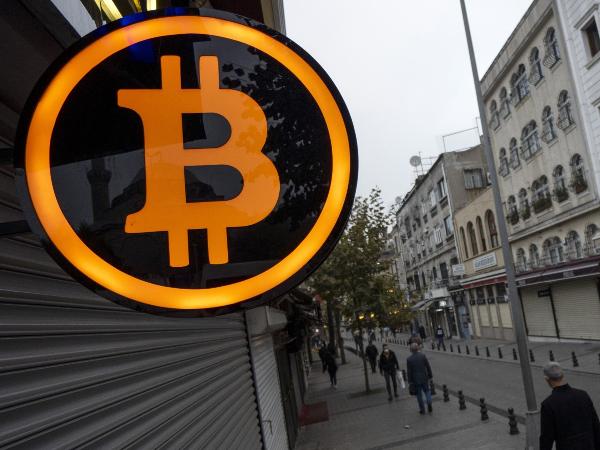
As inflation eases in major economies around the globe, cryptocurrencies could see gains on the back of easing monetary conditions.
Global investors may find relief in recent figures that point to a substantial easing of inflation across major economies. US consumer prices rose 3% in year-on-year terms in June, for their lowest growth level in more than two years. The July print saw only a slight acceleration to growth of 3.2% compared to the same period in 2022, while for the period from June to July core inflation in the US stood at a mere 0.2%.
Analysts say this bodes well for the US Fed, finally giving it the breathing space required to suspend interest rate hikes. Since March 2022, the Fed has lifted its target benchmark rate 11 times to a 22-year high of 5.25% – 5.5%.
Here in Australia the situation is similar, with the headline Consumer Price Index falling to 6% for the June quarter compared to the previous year, as compared to 7% for the March quarter.
Easing inflation has given the Reserve Bank of Australia (RBA) sufficient reassurance to extend its hiatus from rate hikes. The RBA left the cash rate unchanged at 4.1% at the start of August, keeping it stationary for a second consecutive month.
Should central banks continue to shy away from rate hikes, it could bode well for the performance of cryptocurrencies, given that recent history has shown they are highly susceptible to monetary policy settings.
Cryptocurrencies endured a major rout in 2022, after the US Fed and other central banks turned hawkish in response to breakneck inflation. Tokens plunged across the board in tandem with other risk assets that are strongly influenced by tighter monetary conditions.
By the end of 2022 bitcoin had fallen to just a quarter of its value at the start of the year, while a slew of other cryptocurrencies plunged and major players in the sector came apart amidst legal scrutiny – chief amongst them Do Kwon’s Terraform Labs and Sam Bankman-Fried’s FTX.
While the 2022 cryptocurrency winter may have undermined the argument that digital assets serve as an effective hedge against inflation, this precedent could also bode well for them in an environment where inflation is abating and monetary conditions are easing.
If cryptocurrencies perform similarly to other risk assets such as equities, then looser monetary conditions may serve to boost their prices in the same way as stocks.
Here is a list of five of the top cryptocurrencies for investors to consider, should they believe looser monetary policy will prove a boon for digital assets.
1. Bitcoin (BTC)
2. XRP (XRP)
3. Tether (USDT)
4. Ethereum (ETH)
5. Cardano (ADA)
1. Bitcoin (BTC)
Created by Satoshi Nakamoto in 2009, Bitcoin enjoys the prestige of being the first widely adopted blockchain-based token of the Internet era. This vaunted status provides BTC with a sense of credibility and trust that has the potential to underpin its long-term value.
Despite enduring a tumultuous history since its launch over a decade ago, including sharp declines towards the end of the Covid pandemic, BTC currently remains well ahead of its recent pricing. As of 14 August Bitcoin sat at US$29,381, for a year-to-date rise of more than 76%.
2. XRP (XRP)
First launched in 2012, XRP is the native cryptocurrency employed by Ripple, a payment, exchange and remittance network that is based upon a distributed open-source protocol and is accessible to financial institutions around the globe.
Ripple claims to permit “secure, instantly and nearly free global financial transactions of any size with no chargebacks”.
In July 2023 a US court ruled that XRP is not a security, after the Securities and Exchange Commission (SEC) launched legal proceedings against Ripple CEO Brad Garlinghouse and co-founder Chris Larsen in December 2020, on the ground that the cryptocurrency was an unregistered security.
3. Tether (USDT)
First launched in 2014, Tether is an asset-backed stablecoin whose value is in theory pegged to the price of fiat currencies such as the greenback and Euro.
According to reports from Bloomberg, USDT is the largest stablecoin in terms of both trading volume and market capitalisation, as well as one of the world’s most traded cryptocurrencies. reports
Hong Kong-based Tether Limited has stated that it holds reserves equivalent to each USDT issued in order to maintain the peg, although the company has incurred fines for failure to present sufficient audits to regulators in the past.
4. Ethereum (ETH)
First conceived in 2013 by programmer Vitalik Butrin, ETH has since emerged as the world’s second-largest cryptocurrency in terms of market capitalisation. It’s garnered strong support amongst some fintech developers, due to the smart contract functionality of its blockchain-based open-source software.
ETH underwent ‘the Merge’ in September 2022, when it shifted from a consensus mechanism based on proof-of-work to one based on proof-of-stake. According to developers, the move has slashed Ethereum’s energy usage by 99%, potentially overcoming one of the main hurdles to the broader adoption of cryptocurrencies for transactional purposes.
5. Cardano (ADA)
While ADA is one of the newer cryptocurrencies on the market, it’s a pioneer in its adoption of a proof-of-stake consensus mechanism that helps to greatly reduce the energy intensity and raise the efficiency of blockchain-based transactions
ADA currently sits at around US$0.30, for an increase of over 16% year-to-date, and more than 200% since 2018.
Take your position on over 13,000 local and international shares via CFDs or share trading – all at your fingertips on our award-winning platform.* Learn more about share CFDs or shares trading with us, or open an account to get started today.
* Winner of ‘Best Multi-Platform Provider’ at ADVFN International Finance Awards 2022



